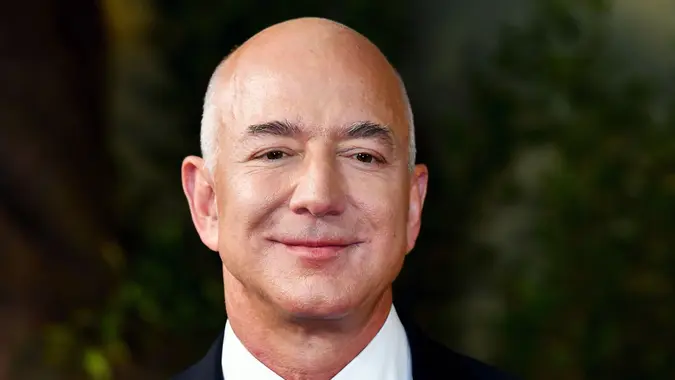2 Reasons Why George Kamel Says Common Debt Payoff Strategy Is a Trap

Commitment to Our Readers
GOBankingRates' editorial team is committed to bringing you unbiased reviews and information. We use data-driven methodologies to evaluate financial products and services - our reviews and ratings are not influenced by advertisers. You can read more about our editorial guidelines and our products and services review methodology.

20 Years
Helping You Live Richer

Reviewed
by Experts

Trusted by
Millions of Readers
George Kamel is an author, podcast host, and radio show personality who works at Ramsey Solutions, Dave Ramsey’s financial education company located in Tennessee.
Kamel promotes the money lessons taught by Ramsey Solutions, which include not having a credit score and paying off debt using the snowball method. In the episode of his show titled “Why Debt Consolidation Is a Trap,” Kamel explained why he believes getting a debt consolidation loan won’t help you get out of debt.
At the end of the video, Kamel shared what he believes is the best method for paying off debt: the debt snowball. Here’s why Kamel doesn’t recommend getting a debt consolidation loan and why he recommends the snowball method instead.
High Fees
Debt consolidation loans often come with fees, and borrowers aren’t guaranteed lower interest rates. If you decide to get a debt consolidation loan, take the time to compare your options and research private lenders, as there are several that advertise no-fee loans. Beware of hidden charges, such as credit check fees and origination fees, which can put borrowers into more debt.
Moving Debt
Kamel also pointed out that when someone gets a debt consolidation loan, they are not paying off debt. Instead, they are moving debt from one form to another. Ramit Sethi, another personal finance expert who is a best-selling author, agreed in an article on his website regarding the pros and cons of debt consolidation. Sethi said that it’s a common misconception that consolidating debt means a borrower will owe less. He explained that once someone consolidates debt with a loan, they’ll owe the same amount; it’s simply in a different form.
Sethi acknowledged that although there are downsides to consolidation loans, there are also benefits, such as streamlining payments and reducing financial stress.
What To Do Instead
Kamel suggested that instead of spending time moving debt from one form to another, use the debt snowball method. This is when a borrower writes down all of their debts and starts paying them off from the smallest balance to the largest balance.
With this method, Kamel said people develop a strategy that keeps them motivated with quick wins because they can pay off the smallest balances first. When someone pays off one balance, they roll that minimum payment into the next debt until all the debt is gone. This builds momentum and helps to make progress, rather than transferring the debt to a different lender, which can lengthen a debt payoff timeline.
Final Thoughts
Debt consolidation can be a useful tool for simplifying debt payments and potentially lowering interest rates on debt. However, many debt consolidation loans come with fees and added costs. Kamel doesn’t recommend debt consolidation loans because he believes getting one doesn’t solve debt problems; it just helps debt take on a new form. So, Kamel encouraged his listeners to tackle the debt they have right away, starting with the smallest balance first.
More From GOBankingRates
- Nearly 1 in 3 Americans Hit by a Costly Holiday Scam, Norton Survey Shows -- How To Avoid This
- Here's What the Average Social Security Payment Will Be in Winter 2025
- How Middle-Class Earners Are Quietly Becoming Millionaires -- and How You Can, Too
- The Easiest Way to Score $250 for Things You Already Do
Sources
- George Kamel (YouTube channel), “Why Debt Consolidation Is A Trap (And What To Do Instead)“
- I Will Teach You To Be Rich (Ramit Sethi website), “Pros And Cons Of Debt Consolidation“
 Written by
Written by  Edited by
Edited by 

























